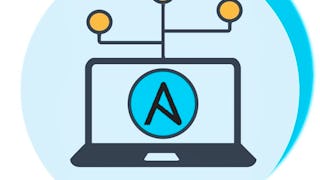Salt is an automation configuration management framework designed on the idea of executing commands remotely. This is open source software developed to automate the configuration of server systems. The course begins with the introduction to Automation with Salt followed by Salt Installation. A brief explanation about features of Salt using command-line tools and Matching Elements is provided in the course. The course also demonstrates the working of Jinja2 and Pillars in a detailed manner.

Cultivate your career with expert-led programs, job-ready certificates, and 10,000 ways to grow. All for $25/month, billed annually. Save now


Recommended experience
Recommended experience
What you'll learn
Install and Configure SaltStack
Demonstrate working of Jinja2 and Pillars
Explore features of Salt using command-line Tools and Matching Elements
Explore working with States and Templating
Details to know

Add to your LinkedIn profile
7 assignments
See how employees at top companies are mastering in-demand skills


Earn a career certificate
Add this credential to your LinkedIn profile, resume, or CV
Share it on social media and in your performance review

There are 2 modules in this course
Welcome to Week 1 of this course .This week, we will be learning about "Introduction to Automation with Salt". We will be installing and configuring SaltStack, an open-source infrastructure automation and management tool. We will explore the features of Salt using command-line tools and learn about matching elements to manage and automate infrastructure more efficiently. By the end of this course, we will have a solid foundation in using Salt for infrastructure automation.
What's included
15 videos1 reading3 assignments1 discussion prompt
Welcome to Week 2 of this courseThis week, we will be focusing on the advanced aspects of SaltStack automation. We will start by demonstrating the working of Jinja2 and Pillars, which are used for template rendering and data management in SaltStack. We will then explore working with States and Templating to define the desired state of systems and enforce them through automated configuration management. Additionally, we will cover advanced SaltStack topics such as Docker installation and integration to provide a complete end-to-end infrastructure automation solution.
What's included
11 videos2 readings4 assignments
Instructor

Offered by
Recommended if you're interested in Software Development


Whizlabs


Cisco Learning and Certifications
Why people choose Coursera for their career




New to Software Development? Start here.

Open new doors with Coursera Plus
Unlimited access to 10,000+ world-class courses, hands-on projects, and job-ready certificate programs - all included in your subscription
Advance your career with an online degree
Earn a degree from world-class universities - 100% online
Join over 3,400 global companies that choose Coursera for Business
Upskill your employees to excel in the digital economy
Frequently asked questions
This course is ideal for IT Professionals, System Admins, and DevOps Professionals. The target audience for ‘Automation with Salt’ look forward to effectively deploying and managing their infrastructure with Salt.
This course is completely online, so there’s no need to show up to a classroom in person. You can access your lectures, readings, and assignments anytime and anywhere via the web or your mobile device.
If you subscribed, you get a 7-day free trial during which you can cancel at no penalty. After that, we don’t give refunds, but you can cancel your subscription at any time. See our full refund policy.
More questions
Financial aid available,





